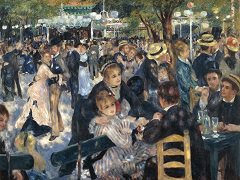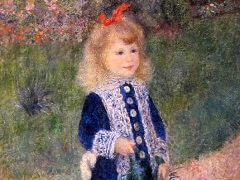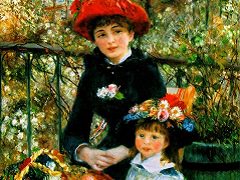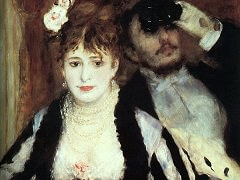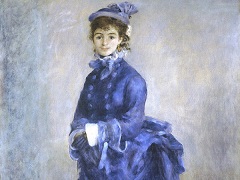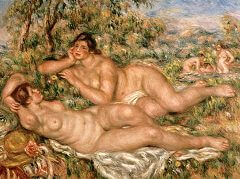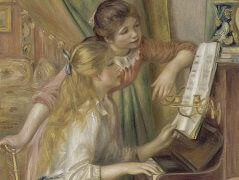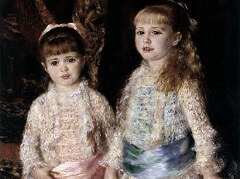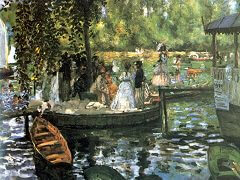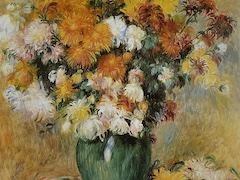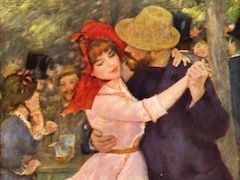Spring Bouquet - by Pierre-Auguste Renoir

For all its apparent looseness, this painting Spring Bouquet has a precise structure. The flowers spill over into the lower left-hand corner in joyous profusion, with an asymmetry as free and as wild as nature. But at once the artist proceeds to counter this unbalance. To the right of the vase, Renoir has developed a heavy shadow area, rich in purples, shaggy in contour, and sharply contrasted with the pool of light below it. Especially important is the placing of the ruler-straight lines in the lower right side of the canvas. In the setup from which Renoir painted there was perhaps no such line as the diagonal which breaks into a zigzag in the extreme corner; yet something of the kind is patently necessary. If the reader will cover this diagonal, he will see that the composition becomes lopsided.
This leads to an awareness of the basic structure. The composition is held in two triangles: a lower one with its apex at the rim of the bowl under the flowers; and the other with its apex at the top of the bouquet.
The Impressionist technique had not yet evolved when Renoir painted this picture. The brushing here is bold, the pigment fat and rich, suggesting the influence of Gustave Courbet. And instead of a generalized effect of luminous color, which will later suggest flowers rather than depict them, here the petals are separate and distinct.
Yet the canvas glows with light and color, indicating that Impressionism is just around the corner; there is something of that school in the feeling of the out-of-doors that Renoir has captured in this canvas. The texture of the flowers is marvelously rendered, and one is tempted to say that the very perfume of the flowers is there, too.
The silvery blue tonality is enlivened by accents of black; the lovely sprinkling of yellow starlike blossoms is sheer delight. Renoir is at the threshold of his career, but his taste already is exceptional.


